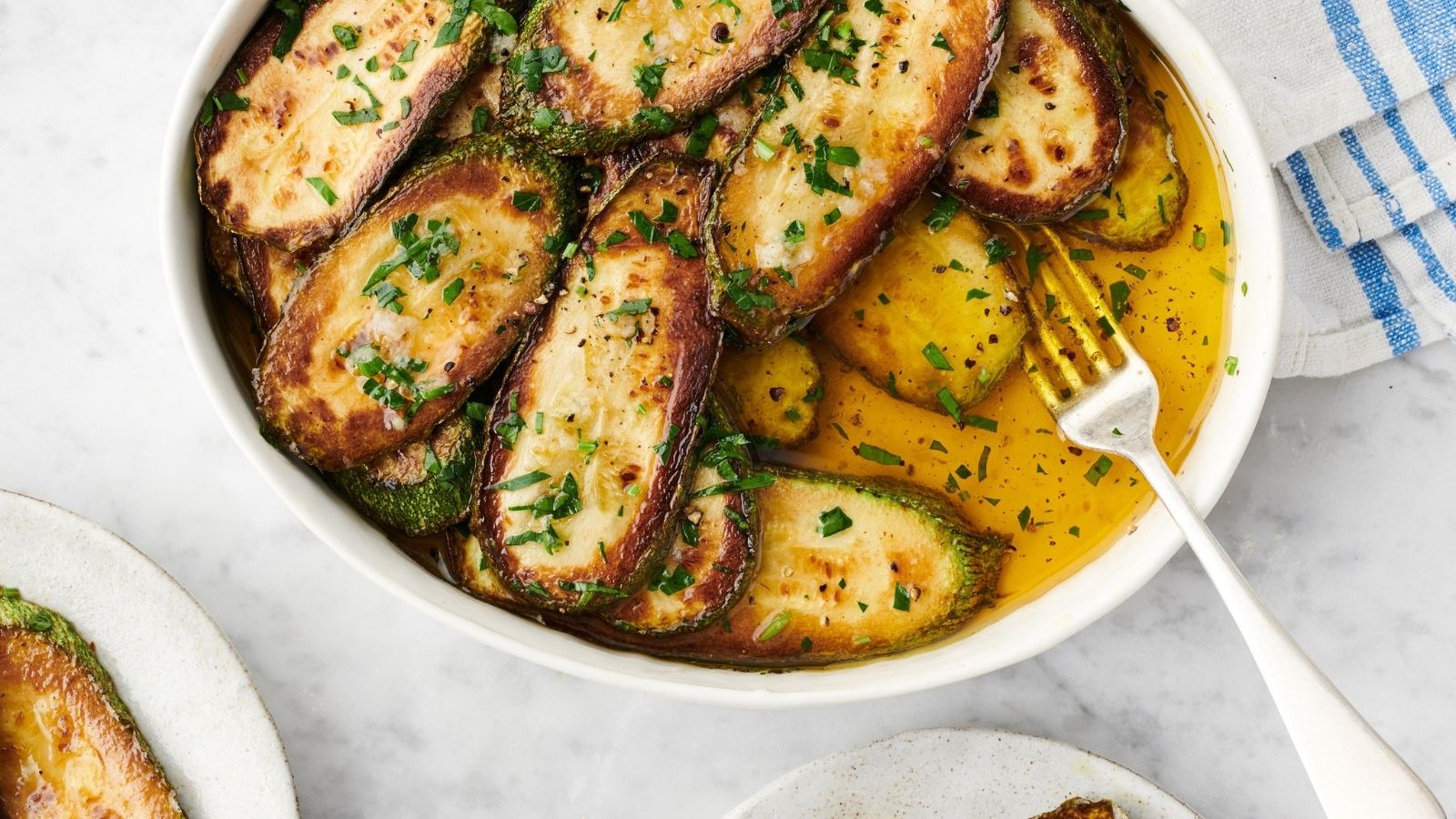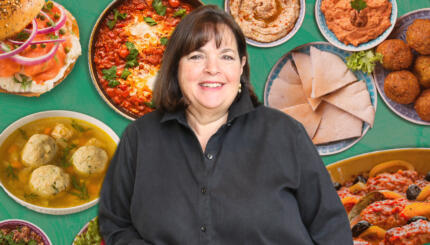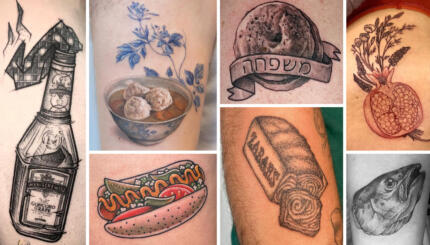The flavors of Jewish Italian cuisine are potent and specific, filling hundreds and hundreds of pages in cookbooks this year and next — even though the size of the culinary community has been shrinking in size since the early modern era. 27,000 Jews live in Italy, according to the most recent census data, stewarding their foodways and culture. “To give a sense of proportion, that is roughly the same number of Jews who reside in, for example, Minneapolis or Milwaukee,” author Benedetta Jasmine Guetta writes in her cookbook. “Neither of which is a particularly Jewish city.”
If you’ve had Jewish Italian classics like stuffed turkey meatloaf, zuppa di pesce, or sarde in saor (preserved Venetian sardines), then you’ve had some of this amazing cuisine — but you’ve also seen Jewish influence in dishes we solely think of as “Italian,” like eggplant caponata, or orecchiette. In the next year, three Jewish Italian cookbooks will be released, “Cooking alla Giudia” by Benedetta Jasmine Guetta on April 12th, “Jewish Flavours of Italy: A Family Cookbook” by Silvia Nacamulli in July 2022, and “Portico: Cooking and Feasting in Rome’s Jewish Kitchen,” by Leah Koenig in 2023. All of the cookbook authors blossom with recipes and stories from this expansive cuisine, and their books will surely entrance anyone interested . . . or simply hungry.
If you were to fill your fridge with ingredients for Jewish Italian feasts, you’d find yourself with crisper drawers of eggplants, quinces, and zucchini flowers, swaths of offal cuts, kosher meats, and pasta, like the Passover sfoglietti — but the most recognizable symbol is the fried artichoke. Historically, Roman Jews were experts in trimming artichokes, traditionally the mammole or cimarolo varieties that grow around Rome, and frying them in oil to create carciofi alla giudia, a crunchy, famous snack food. Leah Koenig told The Nosher they’re “one of the most delicious things I have ever eaten.” Hanukkah presents a wonderful time to blend the celebration of the long-lasting oil with the pleasure of Italian fried classics — “Jewish Flavours” features a Nutella and chestnut sufganiyot while “Cooking alla Giudia” has a lemon-marinated fried chicken, a Tuscan Hanukkah specialty.
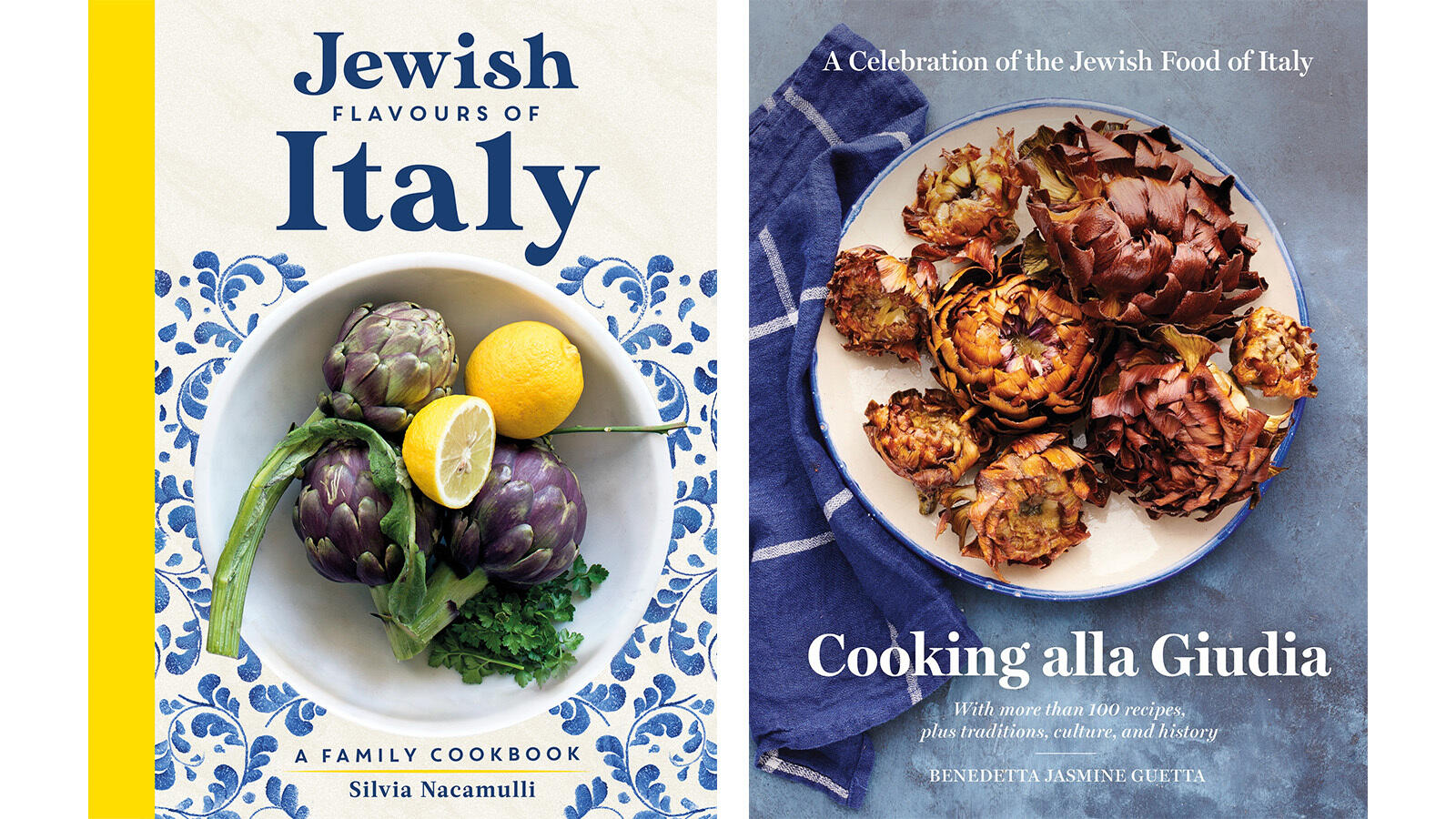
To maintain dietary laws, you’ll find many Jewish Italian dishes sticking to their Italian roots but making ingredients swaps, like goose salami instead of pork salami, or a lasagna with a dairy-free bechamel — something both Nacamulli and Guetta provide in their books, with different twists. Even more dietary restrictions came from Popes, who would release decrees and papal bulls with perplexing culinary rules: Jews could only purchase small, blue fish! Jews could not sell dairy products! “They were so creative in being mean,” Guetta said. But this didn’t stop culinary creativity. Jews began to sell ricotta crostatas, the dairy hidden underneath a tight lattice or top crust to obscure it from view.
The Nosher celebrates the traditions and recipes that have brought Jews together for centuries. Donate today to keep The Nosher's stories and recipes accessible to all.
Although the cuisine has been shaped by Christian influence, Italian Jews predate Christianity. “The first Jews arrived in Rome in the 2nd century BCE as envoys of Judah Maccabee. So yes, it is an ancient community!” Koenig tells The Nosher. “Over the centuries, those original Jews, called Italkim, were joined by Sephardi Jews from Spain, Portugal, and Sicily after the Spanish Inquisition. And, in the 1960s, several thousand Libyan Jews immigrated to Rome. So there are these interesting, overlapping communities that come together to make Roman Jewish cuisine.” The end result of this overlap? Phenomenal food, according to Koenig, “It is simple but flavorful, vegetable-forward, soulful, and deeply cherished by the people who cook it.” This cherishing, enthusiasm, and drive to constantly adapt will keep the cuisine as lively as it has historically been.
In “Jewish Flavours,” Nacamulli includes the anonymous historical poem “La Sparsciandata,” in which a Roman Jewish chef recounts the dishes she knows how to cook. The poem, even printed in small font, fills the page. The cuisine feels massive, but Nacamulli didn’t set out to center historical recipes. “My focus while writing this book has mostly been to celebrate the dishes that are cooked today and reflect a cuisine which I see as alive and kicking,” she tells The Nosher. “In order to understand what the Jews in Italy eat today, it is important to know their long lasting history in the peninsula.” Nacamulli points to the influx of Libyan Jewish foodways, the efforts to connect crypto-Jews to their heritage, and the constant reinvention and revival of the cuisine as bright spots for the future. “The work that Benedetta, Leah and I are doing, is also an important one to help keep all these wonderful foods and traditions alive,” she adds. “I’d like to think that we are succeeding.”
That doesn’t mean some parts of Jewish Italian cuisine won’t disappear. Northern Jewish Italian food features geese (called “the pork of the Jews”) because of how local Jews were able to breed and keep geese in their courtyards. That doesn’t happen these days, and Nacamulli notes that cheaper, more tender turkey and chicken have taken the place of goose. On the other hand, pane con la milza, a Sicilian spleen sandwich with surprising Jewish origins is still a cult favorite. I had my last one in all its dripping, thin-sliced glory in 2018, at least half a millennia after it was created.
To bring Jewish Italian cuisine into your seder table this Passover, you don’t have to visit a specialty market, although both released cookbooks do emphasize the glory of a high-quality tomato or artichoke. Nacamulli’s advice for the holiday centers around preserving all the traditions of your ancestors that you can find in family cookbooks. “If you have your family recipe for haroset then make it, keep it, and pass it on to the next generations, as that’s how traditions survive,” she tells The Nosher. Her haroset is a beautiful mix of hazelnuts, almonds, gala apples, sweet wine and bright, blood orange juice. Other traditional Italian haroset add-ins can include chopped boiled eggs and chestnuts, or, in Guetta’s family recipe, pine nuts and dates. If you want to preview Nacamulli’s cookbook for seder, you can try out her matzah lasagna for a Passover main, which she makes with a mix of beef and veal (and uses a pareve sauce thickened with potato starch rather than flour).
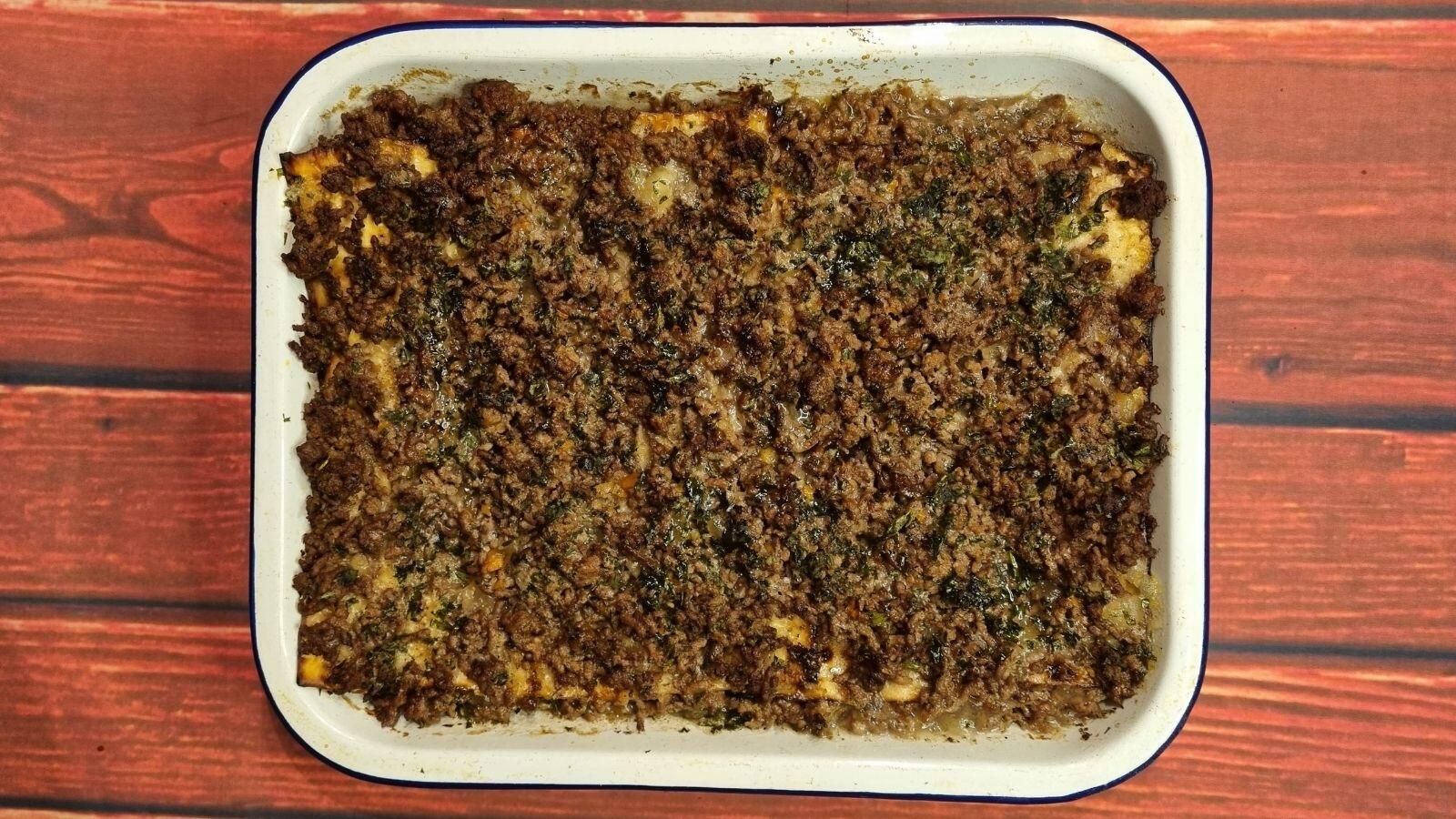
“You really get to enjoy a celebration, whether it’s Passover, Hanukkah, or anything, if you get to sit at the table with your family. Running around the kitchen like a headless chicken doesn’t make the holiday fun,” Guetta says. To stay present with her loved ones, she prepares dishes in advance and selects options that can sit on the stove or fridge with a less watchful eye. For Jewish Italian Passover dishes that meet these chill standards, she recommends pomodori a mezzo, fagiolini a corallo, stracotto beef stew, and concia di zucchine. These zucchini flowers work as a starter or side dishes, and can be served at room temperature if your meal is interrupted by debates about the origins of the plagues — as mine often is.
Although Koenig is still in production of “Portico,” she recommends bocca di dama, a kosher for Passover almond cake that’s lemony, fluffy, and a staple of Roman Jewish seders. “Portico” releases next March, before 2023’s early-April Passover. By next seder, you can collect all three if you want to have the widest breadth of recipes to choose from, but the cuisine isn’t just limited to spring. There’s Roman summers of stuffed tomatoes with rice, Sicilian winters with fennel, orange, and olive salads, or the autumns of Sukkot pumpkin mash sweetened with etrogs. With every turn of the seasons, there’s a new page to open in Jewish Italian cuisine, much of it salted, oiled, and revived for the next generation of chefs.
